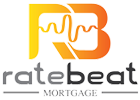
Understanding How A Home Equity Line Of Credit Works For Homeowners
If you are a homeowner then you most likely have the financial power of accumulated home equity. You can use this to get a loan with the best interest rates. For many Americans, HELOC is the most powerful option to borrow money to remodel their home, pay off credit card bills, or finance their child’s education. However, according to a recent survey by TD Bank, many borrowers did not fully understand the terms and details of their line of credit (HELOC).
Here is a quick rundown on what a HELOC is, how it works, how to qualify for one, and its risks and benefits.
What Is A Home Equity Line of Credit?
A home equity line of credit that is generally abbreviated as a HELOC is also known as a second mortgage. It is based on your available home equity and allows you to borrow and repay the money when needed up to an approved credit limit.
You repay the money over a certain period and pay interest only on the amount you have borrowed. It works somewhat like a credit card. Many lenders only allow you to borrow up to 85% of the equity that you have built up in your home.
How Does It Work?
Once you have been approved for a line of credit you can access the money as needed. This phase is called the draw period which generally lasts for five to ten years. You can borrow up to the maximum amount that you have been approved of and many lenders require borrowers to make monthly payments that cover the cost of interest only.
After the draw period ends you will enter the repayment period. During this period you will not be able to borrow any more money but, will have to pay down the principal as well as interest. So, your monthly payments will go up considerably during this period. Typically this period lasts for 10 to 20 years depending on the amount you borrowed and how much the interest rates have fluctuated. However, some HELOC plans require borrowers to repay the outstanding amount all at once (balloon payment)
What Is Required To Qualify For A HELOC?
The requirements for getting a HELOC will depend on the lender. However, a few key criteria that all lenders consider when deciding on your application are:
- High home equity: Most lenders require that homeowners have at least 20% equity in their homes. The less you owe on your home, the higher the amount you can borrow.
- A Good Credit Score: To qualify for a HELOC homeowners need a credit score of at least 620. Having a very good credit score will also influence the interest rate for the line of credit your lender offers you.
- Debt-to-income ratio: Most lenders will require a reasonable debt-to-income ratio of at least 41% – 43%.
- Your payment history: Lenders want to see a consistent history of on-time payments. Your application will not be approved if you have a history of late payments because there is no guarantee that you will make your new loan payments on time.
- Annual Income: Lenders evaluate homeowners’ annual income to ensure that they can afford their monthly HELOC payments.
Benefits of A HELOC LOAN
Here are some of the advantages of a HELOC Loan:
- Low-Interest Rate: The major benefit of HELOC loans is that the interest rates are lower than many other types of loans. They also generally have lower up-front costs. Hence many homeowners prefer to pay off high-interest debt (like credit cards) with a HELOC loan.
- Great Flexibility: With a HELOC loan you can borrow as much or as little as you want during the draw period. Also, if your expenses are lower than estimated then you only make payments for the amount you have borrowed and are not required to pay any additional interest on the remaining line of credit.
- Tax Deductions: In addition, the interest payments on your HELOC may be tax-deductible if you use it for home improvements. You should consult a tax professional about your particular situation.
- Secure a larger line of credit: With a HELOC loan, you will be able to access a larger line of credit than you would on unsecured personal loans.
- Protect your financial stability: You have a line of equity that you can draw upon if you have an unforeseen emergency in the future or you lose your job.
- Useful for ongoing expenses: A HELOC is the right choice if you have a long renovation project or have to make tuition payments.
Potential Risks of Getting A HELOC
Although a HELOC loan has numerous advantages it also comes with some significant drawbacks that you need to consider:
- Variable Interest Rates: HELOC usually has a variable interest rate. Therefore, your interest rates will fluctuate during your loan period. If your interest rates increase so will your monthly payments. Therefore, you must gauge your level of comfort with this probable changeability.
- Your Home Is The Collateral: Another risk associated with HELOC is that you use your home as collateral. So, in the worst-case scenario, your lender can foreclose your home if you default on your loan
- Requires Discipline: As you are required to pay only the interest during the draw period you may not feel the full impact of your borrowing till your repayment period. Hence, you need to be cautious about the amount you borrow.
Conclusion
Before taking out a HELOC loan you need to take into consideration your specific needs and set up a budget so that you can comfortably afford to make your monthly payments. If you feel that a HELOC does not fit in with your lifestyle then you have other loan options like a refinance or home equity loan. To understand which of these three options is best for you click here to read our blog “A Home Equity Loan Or A Refinance? Which Is The Best Option For You?”
To know more about your loan options and determine what works best for you contact our professional expert today.


